Cool Jobs: Diving for new medicines
Researchers swap lab coats for wetsuits in the search for new drugs to treat disease
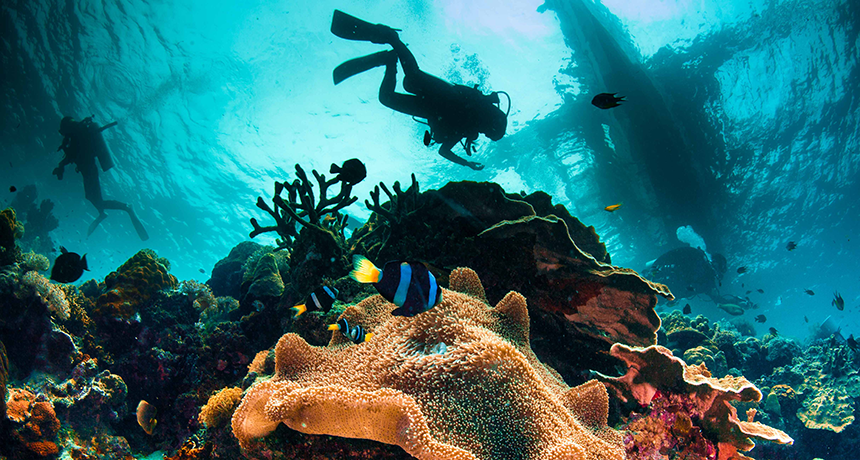
Life beneath the sea surface can be lovely and lively. But many organisms there produce toxic chemicals to fend off predators. Divers are now collecting such poisons as candidate drugs for human medicine.
paulbcowell/iStockphoto
Sharks aren’t the scariest things in the ocean for scientists who dive to work. Powerful currents, created where the ocean floor drops away, can be just as deadly.
“You can get sucked down and crushed by the pressure within minutes,” notes Marcel Jaspars. He’s a chemist who once saved himself from such a current. He encountered it while taking photos of a sea sponge near Indonesia, in Southeast Asia. Luckily, he inflated his dive vest in time. He was able to float to the surface and escape the potentially deadly current.
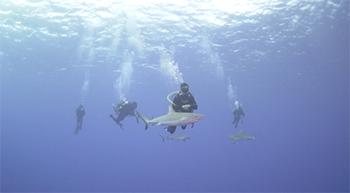
Diving has risks. But the scientists who work underwater train to deal with these dangers. For Jaspars, the rewards of research and underwater adventure are greater than the risks. He searches for unusual chemicals made by ocean life. Then he analyzes them for ingredients that might serve as medicines for people.
The sea may seem like a strange place to look for new drugs. But organisms in the ocean have had to adapt to a tough environment. Some of the chemicals they make for survival might help people, too. More than 50 years ago, scientists discovered a new anti-cancer drug in a sea sponge. Since then, researchers have been hunting the seas for more of such useful natural products.
With the help of underwater robots and small submarines, Jaspars and other scientists are searching the seas — from shallow reefs to the oceans’ great depths. Their goal: finding chemicals made by marine life for use in one day treating human disease.
Diving deep
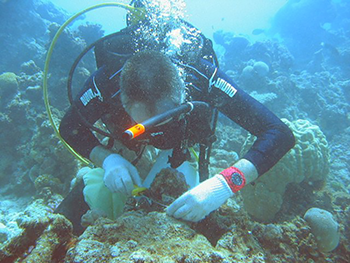
Jaspars’ research has taken him from the bright blue waters around Indonesia to the Red Sea (south of Israel, and bordering many African nations). He got hooked on diving after watching television shows about ocean explorer Jacques Cousteau. By the time Jaspars was 16, he had earned his certification to dive in the cold waters off Great Britain. Later, he studied chemistry and biology. Those studies now help him figure out how to turn marine molecules into human medicines.
Consider sea squirts. These soft, boneless animals anchor their bodies to the sea floor. As they pump food-laden water through their bodies, they filter out any bits they can eat. Certain squirts on Australia’s Great Barrier Reef also make chemicals that can kill human cancer cells. (The chemicals probably help the squirts defend themselves.) Jaspars helped figure out how to get bacteria in a lab to produce the same chemical. This let scientists study the chemical without collecting — or harming — any wild sea squirts.
Now Jaspars directs the Marine Biodiscovery Centre. It’s at the University of Aberdeen, in Scotland. There he focuses on microbes living in very cold environments, such as the Arctic Ocean. “It’s too cold and deep to dive there,” he says. So scientists on research ships haul up buckets of sludge from the seafloor. Later, they send him small samples of what they’ve hauled up.

Microbes living in the Arctic’s frigid waters break down their food using different tactics than do organisms on land. This process of turning food into energy for growth, activities and reproduction is called metabolism (Muh-TAA-buh-lizm). These pathways also produce chemicals called “secondary metabolites.” Those are chemicals the microbes don’t need to survive. Still, they may be useful to the microbes. One day they also might help people.
During a four-year project called PharmaSeas, scientists made thousands of extracts from those seafloor samples. Working with researchers from across Europe, Jaspars whittled that number down to about 700 “extracts of interest.” In about a dozen of them, researchers found compounds that can kill bacteria that some of today’s antibiotics cannot. Three other newfound chemicals reduce epileptic seizures (electrical storms in the brain) in mice. Yet another compound may reduce the symptoms of Alzheimer’s disease. That chemical came from a previously collected sea sponge from the Philippines.
Story continues below image.
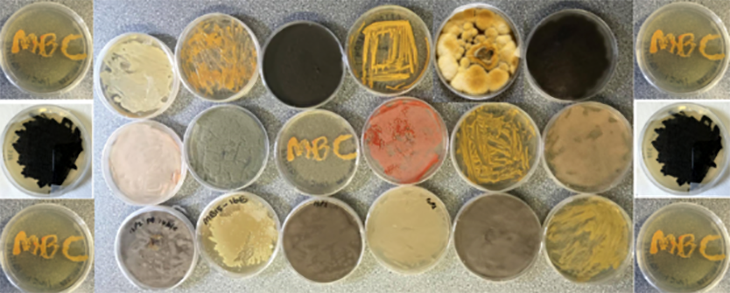
Soon Jaspars will start the same process with new batches of mud from Antarctica. These samples were dredged up as deep as 5,000 meters (3.1 miles). The pressure at that depth is far greater than at sea level. With a new lab instrument, Jaspars will be able to simulate that pressure. That will help the microbes from the seafloor feel like they’re at home. Researchers need to recreate such harsh conditions to nurture organisms that are used to extreme habitats. And, Jaspars suspects, such organisms will likely make metabolites no one has ever seen before.
Secrets of sponges
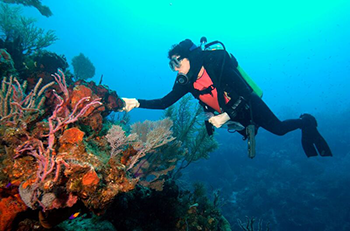
Unlike Jaspars, Shirley Pomponi never dreamed of becoming a deep-sea diver. She planned to be a nurse. But after her first dive, she knew there was no way she was going to spend the whole rest of her life on land.
“The freedom was amazing,” Pomponi says, recalling her early dives in the Caribbean Sea. “You’re breathing underwater — almost weightless — and looking at all these amazing things.”
Sponges fascinated her the most. These simple animals live everywhere, from shallow waters to deep seas. Because they’re always anchored to the seafloor, they can’t move if another sponge tries to overtake them. So sponges make chemicals to protect themselves against hostile invaders. Some of those defense chemicals might lead to new drugs.
For example, some sea-sponge chemicals poison an invading sponge by stopping its cells from dividing. Halting cell growth is also a key way to stop cancers, Pomponi notes. Cancers are basically cells that invade healthy tissue, where they endlessly divide, or grow.
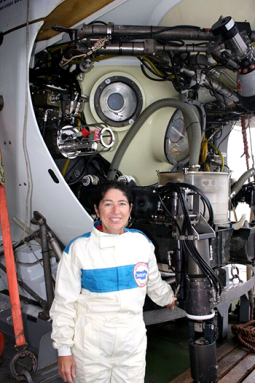
Pomponi found one such promising chemical on one of her most memorable dives. It had been in the Caribbean. She was part of a team that discovered an anti-cancer compound being made by a deep-water sponge. The organism’s name was Discodermia dissoluta (Dis-ko-DER-mah Dis-soh-LEU-tah). Later, researchers turned the sponge compound into a drug called discodermolide (Dis-koh-DER-moh-lyde).
Since then, this biologist has made too many dives to count. More than 300 of her underwater trips were in submersibles, a type of mini-submarine. These vessels can descend to 900 meters (roughly 3,000 feet). Pomponi specializes in categorizing sponges by how closely or distantly related they are to other sponge species. That might sound boring. But a college assignment on sponge systematics — the history of naming their species — changed the course of her life.
Recalls Pomponi, “I got to play detective: Who first named this sponge? Then who changed the name? When?” The assignment was harder than she expected. She needed extra time to finish the project. “By the end, I thought sponges were totally cool. And that led to teaching myself how to identify them,” she says.
Identifying sponges is important because those from closely related families often make similar chemicals. What Pomponi learned about them led other researchers to invite her on undersea expeditions. And after many years, that led to the job she holds now. Pomponi directs the Cooperative Institute for Ocean Exploration, Research and Technology. It’s funded by the National Oceanic and Atmospheric Administration. From her base in Fort Pierce, Fla., she travels the world in search of more sponges that could yield new medicines.
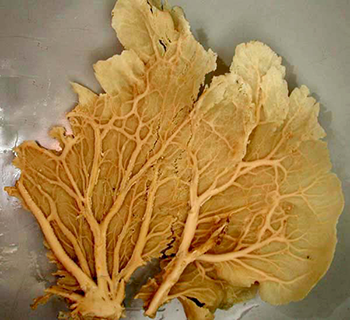
As much as she loves diving and finding new sponges, Pomponi wants to limit how many sponges people remove from the sea. One way to do that is by only taking small samples — not the whole animal. “If you leave enough of a sponge and its attachment to the bottom, then it will grow back,” she explains.
She’s also working on growing sponges in the lab. By adding nutrients to just a few sponge cells, she can coax them to grow, divide and make their unusual chemicals in a flask. It’s not easy. The conditions have to be just right before those cells will divide. But if she is successful, researchers will not need to collect so many wild sponges.
That could help scientists answer even more questions. “I’m always wondering what else we can learn about sponges,” Pomponi says. For example, “Why don’t they ever get cancer?” Finding that answer might one day lead to disease treatments — or even new diets or other strategies that prevent cancer in people.
Glowing in the dark
Night is the best time to be underwater, according to biologist David Gruber. That’s when he searches for things that glow in the dark — red corals, green eels or maybe fish with shining eyes.
“Why and how do these creatures make their colors?” he wants to know. “And could those colors help humans?”
A love of surfing spurred Gruber’s interest in ocean science. He wanted to learn everything he could about the sea. Now he’s a biologist at City University of New York and a researcher at the American Museum of Natural History in New York City.
Unlike most people, Gruber really likes to swim in the dark.
In the ocean, sunlight doesn’t reach very far beneath the sea surface. Below about 30 meters (100 feet), there is only blue light. In that blue world, some animals use biofluorescence (By-oh-flor-ESS-ens) to turn that light into greens, oranges and reds.
Story continues below image.
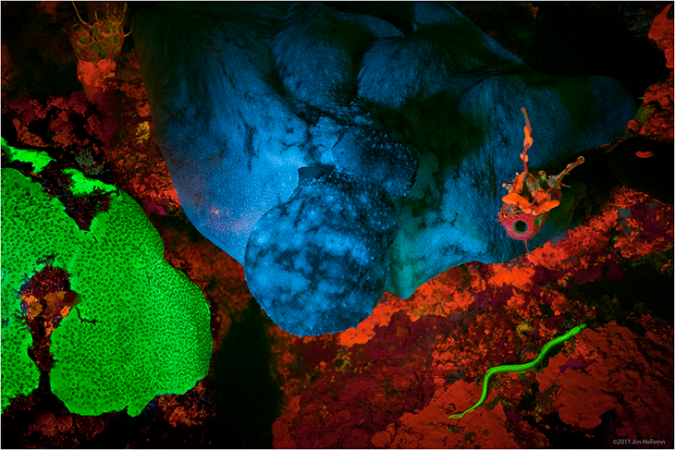
“The way animals use this glowing mechanism sounds like a science fiction story,” Gruber says. These animals use colored molecules called pigments. The pigments absorb incoming blue light, then send that light back out. The re-emitted light has less energy and a longer wavelength. It might look green, orange or red. This is different from bioluminescence (BY-oh-lew-min-ESS-ens), where animals make their own light through chemical reactions. The colors and light may help animals find each other, attract prey or hide from predators, Gruber says.
One pigment used by biofluorescent creatures is called GFP. That’s short for green fluorescent protein. Researchers have been using this molecule over the years for a range of purposes. It can highlight certain cells in tissues from a wide range of organisms. It can tag molecules during chemical reactions or to follow their movements inside cells. In one study, it was even used to tag the fur of cats that were carrying an important gene. In the dark, those cats actually glowed green.
Beyond green
But scientists wanted more colors to work with.
GFP was first discovered in jellyfish. So one of Gruber’s first missions was to find some other sea creature that would glow red. He teamed up with a neuroscientist who also liked to dive. The pair went to Australia’s Great Barrier Reef.
“We swim along looking for something with the right spectra, or range of colors,” Gruber explains.
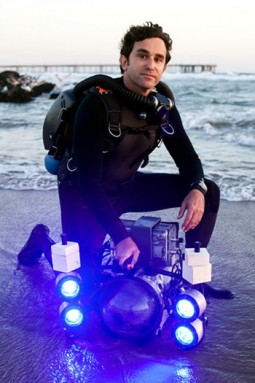
He and his diving team carry special lights to spot the fluorescence. “Once we find what we’re looking for, we take a tiny sample.” Back at his lab, he then removes the DNA and searches through the organism’s genes for a color-making protein. Then he uses those genes to re-create that protein in the lab. Afterward, he can probe how it works. With luck, it just might be useful for biomedical research.
On that fateful trip to Australia, the two scientists discovered a sea anemone that made a red protein new to science. In the lab, Gruber and his research team turned that red glow into an easy-to-see test for possible cancer drugs. They tagged cancer cells with this protein. When those cells are active, they fluoresce red. If some drug stops those cells from making new proteins, there’s no glow.
During another dive trip to search coral reefs in the Bahamas, Gruber’s team passed a small eel. It was glowing green. Gruber didn’t even notice the unusual eel until weeks later, when he was looking over his photos. As it turned out, that eel’s glow came from an entirely new family of fluorescent proteins — ones totally different than GFP.
“Each time we find fluorescence in another animal, it’s like a whole new can of worms,” says Gruber. It can take years to figure out how what turns the color on or off.
More recently, another surprise swam past Gruber during a full-moon dive in the Solomon Islands. While his blue lights shone on a coral reef, a hawksbill sea turtle glided into the glare. For the first time, Gruber’s cameras captured a green and red fluorescent pattern on the turtle’s shell. He’s just beginning to decipher what kind of chemistry that turtle uses.
There’s no shortage of colorful mysteries for Gruber to solve. He also wants to understand how marine creatures might view each other. What do sea turtles really see?
“It’s like getting invited to a psychedelic party,” Gruber says. “I’m so fortunate to be a scientist who gets to put on a wetsuit and spend a lot of time in the water. I like to think about how to use our technology, not only for medicine, but to get us closer to nature.”







